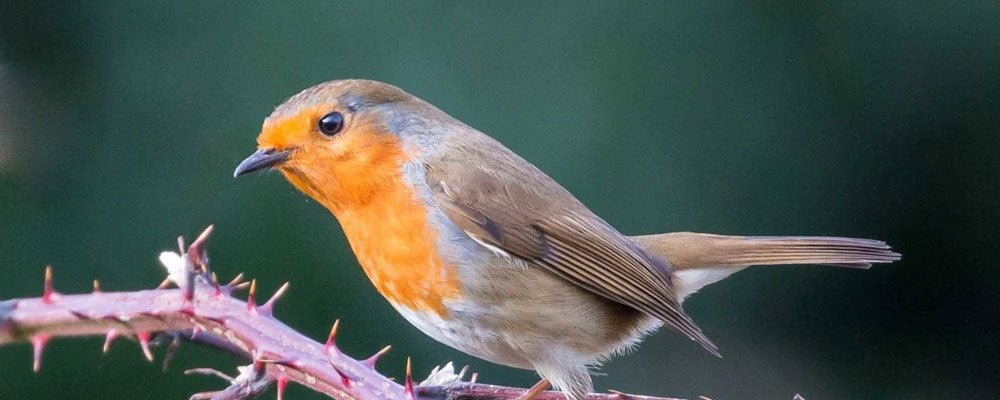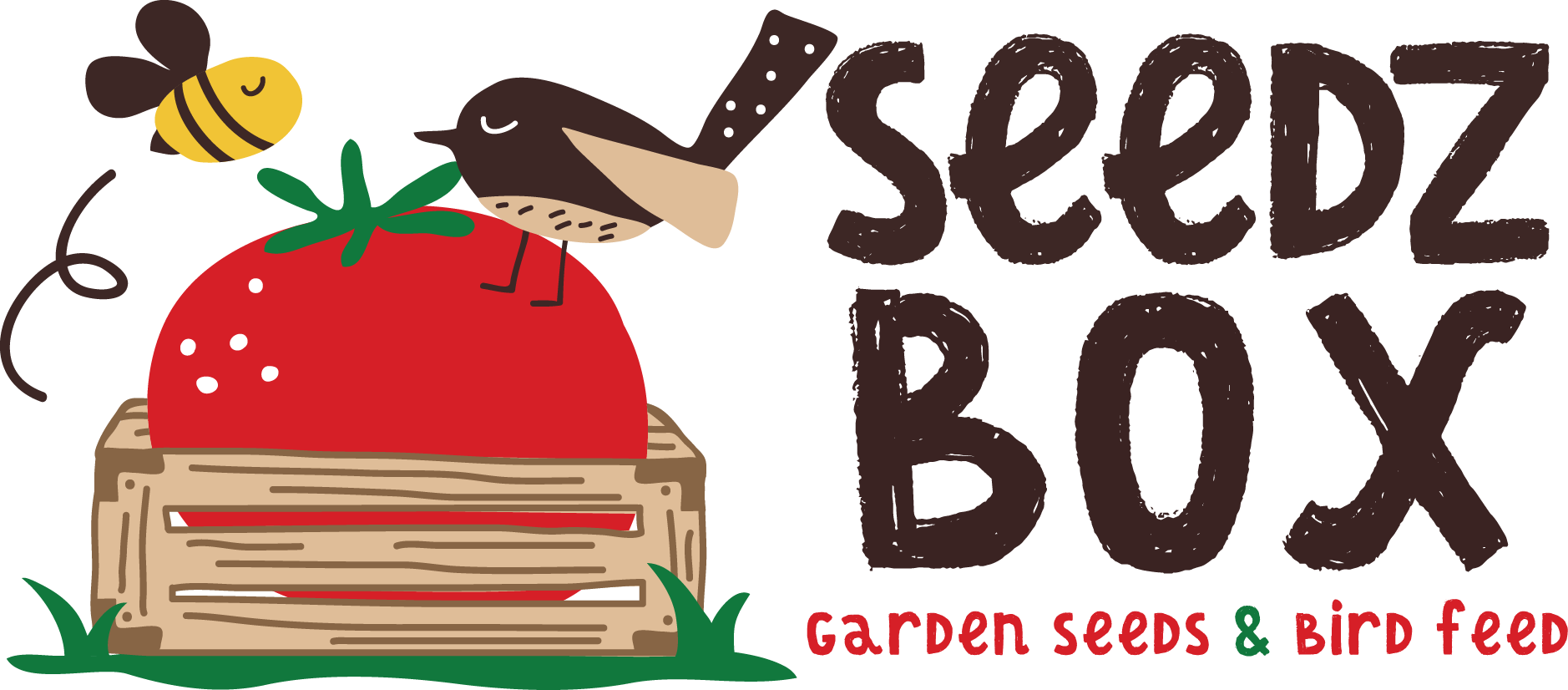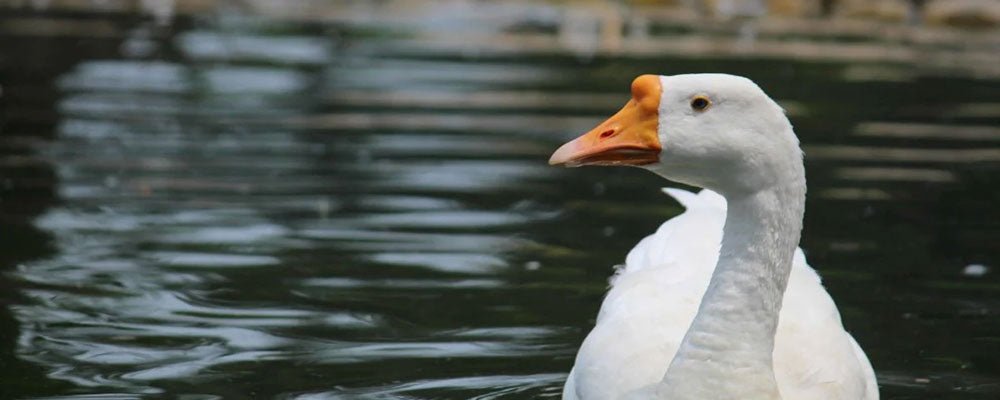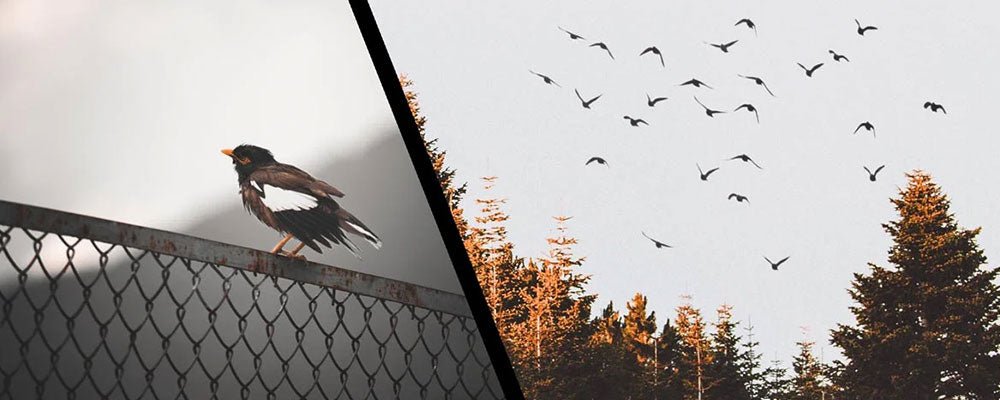
Robins, Sparrows, Dunnocks, Wrens, Tits & Blackbirds
Although sparrows, dunnocks and wrens commonly reside in gardens, these birds are not easily noticed because of their small stature. The dull-coloured plumage provides camouflage, blending in with vegetation. The presence of house sparrows is more obvious because they consort in twittering flocks.
The attractive song of robins and blackbirds may be seen in British gardens at any time of the year forming part of the dawn chorus in woodland areas, especially in spring when they are breeding.
Here is our guide to Robins, Sparrows, Dunnocks, Wrens, Tits & Blackbirds:
House Sparrow Bird (asser domesticus)
A common sight on garden bird tables and in city parks, house sparrows have adapted well to living closely alongside people, even to the extent of nesting under roofs of buildings.
Highly social birds, these sparrows form loose flocks, with larger numbers congregating where food is readily available. They spend much of their time on the ground, hopping along but ever watchful for passing predators such as cats.
It is not uncommon for them to construct nests during the winter, which serve as communal roosts rather than being used for breeding. The bills of cock birds turn black in the spring, at the start of the nesting period.
During this time, several males will often court a single female in what has become known as a 'sparrows' wedding'. In more rural areas, house sparrows sometimes nest in tree holes, and occasionally construct domed nests. They also use nest boxes.
How to identify House Sparrows and what do they look like?
Rufous-brown head with a grey area on top. A black stripe runs across the eyes and a broad black bib runs down over the chest. The ear coverts and the entire underparts are greyish, and there is a whitish area under the tail. Hens are shade of brown, with a duller each a pale stripe behind eye and a fawn bar on each wing.
Wren Birds (troglodytes troglodytes)
Although often difficult to spot due to their size and drab coloration, these tiny birds have a remarkably loud song which usually betrays their presence.
Wrens can be found in gardens where there is plenty of cover, such as ivy-clad walls, scurrying under the vegetation in search of spiders and similar prey. During the winter, when their small size could make them vulnerable to hypothermia, they huddle together in roosts overnight to keep warm.
However, populations are often badly affected by prolonged spells of severe weather. In the spring, the hen chooses one of several nests that the male has constructed, lining it with feathers to form a soft base for her eggs.
Wrens are surprisingly common, although not always conspicuous, with the British population alone made up of an estimated ten million birds.
How to identify Wrens and what do they look like?
Reddish-brown back and wings with visible barring. Lighter brown underparts and a narrow eye stripe. Short tail, often held vertically, which is greyish on its underside. Bill is long and relatively narrow. Sexes alike.
Dunnock Birds
Once known as the hedge sparrow, the dunnock is actually a member of the accentor family a group of small, streaked birds. It can be distinguished from the house sparrow, which it superficially resembles in size and in its dull colouring, by its pinkish-orange legs and slender bill.
Dunnocks are frequent garden visitors, but their secretive ways and skulking, mouse-lke habits make them difficult to notice. Generally Keeping to the cover of hedges and shrubs they sometimes alight on bird tables, but more often peck crumbs and seeds from the ground.
Research has revealed that the unassuming-looking dunnock has a complex sex life. During the breeding season males and females establish separate but overlapping territories, and both sexes often have several mates.
For the male, the aim is to sire as many young as possible, while the advantage to the female is that any male with which she has mated will help to raise the chicks. Hens build their nests low in dense vegetation and may raise two to three broods in a season.
The rapid, warbling song is similar to a wren's but quieter, with breeding birds keeping in touch with shrill, cheeping calls. Superficially falling into the category of little brown jobs', closer inspection reveals a delicately marked bird.
How to identify Dunnocks and what do they look like?
Dunnocks broadly resemble sparrows in size and appearance, but with a purplish-grey head, throat and breast, and sometimes a brownish mask around the eyes.
The back and wings are chestnut-brown with darker streaks and black feather-centres. The rump is also grey, with a chestnut-brown tail. The warbler-like is slender and pointed, the legs pinkish orange. Sexes are alike. Juveniles are browner and more streaked than the adults.
Robin Birds (erithacus rubecula)
One of the best-loved garden birds, the robin's colourful appearance belies its strong aggressive streak, for these birds are highly territorial. In the garden, they can become very tame, regularly hopping down alongside the gardener's fork or spade to snatch invertebrates such as earthworms that come to the surface.
Young, recently fledged robins look very different from mature individuals - they are almost entirely brown, with dense spotting on the head and chest.
Robins sing quite tree melodiously all year round to defend their territories, also producing a tick-like call which is drawn-out and repeated, particularly when they are alarmed by the presence of a predator such as a cat. Since robins usually feed on the ground, they can be vulnerable to these predators.
How to identify Robins and what do they look like?
Bright orange extends from just above the bill, around the eyes and down over virtually the entire breast. The lower underparts are whitish-grey, becoming browner on the flanks. The top of the head and the wings are brown, with a pale wing bar. The sexes are alike.
Common Blackbird Birds (turdus merula)
One of the most familiar garden birds, blackbirds frequently descend on lawns to search for invertebrates. Earthworms, which feature prominently in their diet, are most likely to be drawn to the surface after rain, and slugs and snails also emerge in wet conditions. In the 19th century, blackbirds were rarely seen in gardens, but today they have become commonplace.
They are vocal and produce a range of fluty notes. Cocks are talented songsters, and both sexes will utter an urgent, harsh alarm call. Although blackbirds do not associate in flocks, pairs can be seen foraging together.
As with other thrushes, their tails are surprisingly flexible and can be raised or lowered at will. It is not unusual to see pied blackbirds, with variable amounts of white among the black plumage. The majority of these birds, especially those with the most extensive white, are cocks.
How to identify Blackbirds and what do they look like?
Jet-black plumage contrasts with the bright yellow bill, which becomes a deeper yellow during the winter. Hens are drab in comparison, brownish overall with some streaking, notably on the breast, and have a darker bill.
Great Tit Birds (parus major)
Great tits form groups after the breeding season, often associating with other small birds, foraging for food in woodlands as well as visiting bird tables, where their bold, jaunty nature makes them conspicuous.
Although they do not hoard food like some tits, they are able to lower their body temperature significantly overnight when roosting, effectively lessening the amount of energy they need. Great tits become much more territorial at the start of the breeding season, which in Europe typically starts during March.
They build their nest in a tree hole, but readily use garden nest boxes where provided. Studies have shown that the male seeks out potential nesting sites within the pair's territory, but it is the female who has the final choice. Pairs may nest twice during the breeding period, which lasts until July.
How to identify Great Tits and what do they look like?
Cock has a black head with white cheek patches. Broad band of black extends down the centre of chest, with yellow on either side. Wings olive-green at the top, becoming bluish on the sides, flight feathers and tail. Hens similar but with a narrower black band. Young paler, with yellowish cheeks and less of the black band.
Blue Tit Birds (parus caeruleus)
A common visitor to bird tables, blue tits are lively, active birds by nature, and are welcomed by gardeners because they eat aphids. Their small size allows them to hop up the stems of thin plants and, hanging upside down, seek pests under the leaves.
Blue tits are well-adapted to garden life and readily adopt nest boxes supplied for them. Their young leave the nest before they are able to fly properly, and are therefore vulnerable to predators such as cats. Those that do survive the critical early weeks can be easily distinguished by the presence of yellow rather than white cheek patches.
How to identify Blue Tits and what do they look like?
Has a distinctive blue crown edged with white, and a narrow black stripe running back through each eye. The cheeks are white. Underparts are yellowish, and the back is greyish-green. There is a whitish bar across the top of the blue wings. The tail is also blue. Sexes are similar but hens duller.
Coal Tit Birds (parus ater)
These tits are often seen in gardens feeding on bird tables, sometimes taking foods such as nuts which they then store in a variety of locations, ranging from caches on the ground to suitable holes in trees.
The urge to store food in this way becomes strongest in late summer and during autumn, and helps the birds to maintain a food supply through the coldest months of the year. This hoarding strategy appears to be very successful, since coal tit populations rarely crash like many other small birds following a particularly harsh winter.
In fact, these tits have increased their breeding range significantly over recent years, with their distribution now extending to various islands off the British coast, including the Isles of Scilly.
During winter, in their natural habitat of coniferous forest, they may form flocks comprised of many thousands of individuals, yet in gardens they are only usually seen in quite small numbers.
How to identify Coal Tits and what do they look like?
Jet-black head, with white patches on the sides of the face and a similar area on the nape. Greyish-olive upperparts, with white wing bars, and brownish-white underparts, although some marked regional variations. Young birds have pale yellowish cheek patches. Sexes very similar, but the female's head markings may be duller. The bill is black. Legs are greyish.



Leave a comment
This site is protected by reCAPTCHA and the Google Privacy Policy and Terms of Service apply.